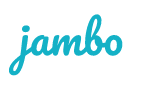
What is stakeholder mapping?
Stakeholder mapping is the process of identifying and visually organizing different types of stakeholders, and is one part of stakeholder analysis. Stakeholders are individuals, groups, or organizations that are interested in, affected by, or have the ability to influence a project or business.
Stakeholder mapping prioritizes stakeholders, tailors communications and engagement strategies, and ensures all stakeholders are considered throughout the project's lifecycle. It is a visual representation, either a chart or matrix, that helps you understand your stakeholders and how they are affected by or can influence your project outcomes.
What we cover in this blog:
- Stakeholder mapping techniques - Key steps
- What is stakeholder mapping used for?
- Why is stakeholder mapping important?
- Who should do stakeholder mapping?
- How to do stakeholder mapping
- What are the four steps to building a stakeholder map?
- What do you do after you finish your stakeholder mapping exercise?
What is the best tool for stakeholder mapping?
After identifying your stakeholders, you map them, categorizing them into groups to help guide your engagement strategy.
A popular stakeholder categorization technique is a stakeholder engagement assessment matrix, a tool for analyzing and categorizing stakeholders based on their current and desired levels of engagement with a project or initiative.
We recommend Mendelow's Power-Interest Matrix, a stakeholder engagement assessment matrix that categorizes stakeholders based on their level of interest (high/low) and influence (high/low) on your organization or project. Using this categorization, you can identify the most suitable engagement strategies and tactics for each stakeholder.
Mendelow's Power-Interest Matrix categorizes stakeholders based on:
- High Interest/High Influence: These are your key players and should be managed closely. They are the stakeholders who can most impact the success of your project, and must be engaged thoroughly. Put your highest engagement efforts into this group.
- Low Interest/High Influence: This group can significantly influence your project, so it's essential to keep them satisfied, help meet their engagement needs, and make them feel involved. They don't require as much engagement, but they still need to be happy with your engagement.
- High Interest/Low Influence: Keep this group informed. Frequent communication helps provide feedback on your project, preventing possible issues, and identifying areas that could be improved or may have been overlooked.
- Low Interest/Low Influence: This group should be monitored, despite having little interest or influence in your project. Inform them about your project, and periodically check in.

What is stakeholder mapping used for?
Stakeholder mapping is used to inform your broader stakeholder engagement strategy that supports the success of your projects. It all starts with the categorization of your stakeholders, which provides the following benefits:
- A clearer understanding of your stakeholders and their levels of interest and influence. This enables you to develop an action plan and gain a deeper understanding of your engagement program, helping you define the most effective ways to interact and communicate with various stakeholder groups.
- More effective resource allocation. By prioritizing your stakeholders, you can determine where to focus and allocate resources, such as time, effort, and budget. For example, you should put more effort into engaging with stakeholders in your high-interest/high-influence group than you would with those in the low-interest/low-influence group. Stakeholders with high interest and high influence are more likely to have a positive or negative impact on your project. In contrast, low-interest and low-influence stakeholders are less likely to have an impact.
- Anticipating project risks. By understanding your stakeholders, you're uniquely positioned to assess project needs and mitigate risks, concerns, or challenges from the start.
Find out how stakeholder engagement software can help with stakeholder mapping →
Why is stakeholder mapping important?
1. To build your stakeholder engagement plan
Stakeholder mapping helps you build your stakeholder engagement plan by empowering you and your team to understand the number of stakeholders you should engage with and the extent of their involvement.
2. To allocate resources
This pre-engagement knowledge from mapping helps you to budget your money, time and people accordingly. A stakeholder mapping exercise is beneficial for any organization engaging with stakeholders. However, stakeholder mapping isn't just functional for stakeholder engagement and consultation; it's also helpful for any organization managing stakeholder relationships.
Learn about the benefits of using an SRM software to map out your stakeholders →
Who should do stakeholder mapping?
This exercise is a crucial practice for internal teams across companies that aim to drive project success, ensure regulatory compliance, and maximize the impact of engagement. It ensures that teams can streamline their consultation processes and that no relationship is overlooked. Here's who should participate:
- Project managers: Lead the charge for project deliverables and outcomes, and are accountable for meeting stakeholder expectations throughout the project lifecycle.
- Community and relations teams: Lead the interaction and foster positive relationships with stakeholders, including Indigenous and local communities.
- Regulatory, compliance, and legal teams: Ensure all activities comply with legislative and reporting requirements while mitigating associated risks.
- Communications teams: Design clear messaging and engagement strategies based on the various stakeholders.
- Leadership: Provides strategic direction and sanctions the company's commitment to responsible engagement.
How to do stakeholder mapping
Stakeholder mapping is a low-cost activity that can help your organization save resources in the long run. To do a stakeholder mapping exercise, all you need is:
- A four-quadrant map. (Click the image below to download our free printable stakeholder map template - we suggest printing this to its full size and sticking it to a wall for optimal visual collaboration.)
- Sticky notes (to write down the names of stakeholders).
- Pens or markers.
- Having more than one person is ideal for brainstorming, as it allows for a variety of perspectives.
- Time to complete the exercise.
What are the four steps to building a stakeholder map?
- Brainstorm: Write the names of every stakeholder you and your team can think of on a sticky note (one name per sticky note). Ask yourself trigger questions to help foster discussion on possible stakeholders.
- Categorize: With your team, discuss how much interest and influence this person/organization has regarding your project. Again, use trigger questions to guide and help identify a stakeholder's interest and influence on your project.
- Populate: Place the sticky note in the appropriate quadrant on your stakeholder map.
- Double-check: Once done, take a moment to discuss with your team (even bring in a few more people to review the map), consider whether any sticky notes should be moved to another box, and discuss whether you're missing any stakeholders.
What do you do after you finish your stakeholder mapping exercise?
Once you've identified, mapped and classified your stakeholders, your next step is to choose your level of engagement. Check out "The Spectrum of Public Participation," developed by the International Association for Public Participation (IAP2), for more information on engagement levels. Once you decide on your level of engagement, you're ready to choose your specific engagement tactics. Your tactics refer to your preferred methods for engaging (e.g., town halls, information packages, phone calls, emails, etc.).
1. Monitor your stakeholders
Continue to monitor your stakeholder map throughout the project lifecycle. Stakeholders can be categorized in various ways, and it's essential to know when this happens.
2. Track your stakeholder engagement
Once you begin engaging, you'll need to manage all the stakeholder information you collect (contact details, communication records, etc.) and define a scalable and repeatable process for managing this information and your stakeholder engagement project plans.
Using spreadsheets or a software tool you already have access to, like a CRM, might be tempting to do this job. Still, these are not long-term, sustainable solutions for managing stakeholder engagement information.
Learn more about how to track stakeholder engagement effectively →
Using Stakeholder Relationship Management (SRM) software for stakeholder engagement
SRM software is made specifically to manage stakeholder information and engagement efforts. It helps you connect all your stakeholder engagement information in one platform. This is especially important as concerns, issues, and commitments are identified for stakeholders as part of your project.
An SRM is the best way to manage stakeholder relationships, visualize engagement histories, and understand your project's issues and commitments across all stakeholders.
Key takeaways
|







